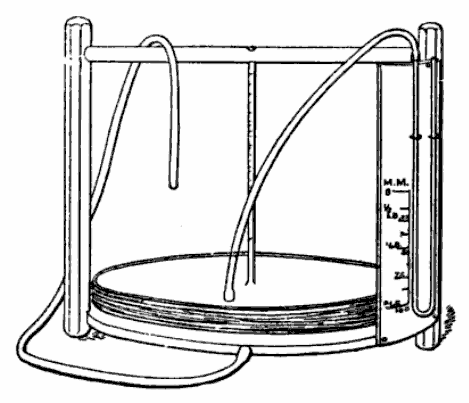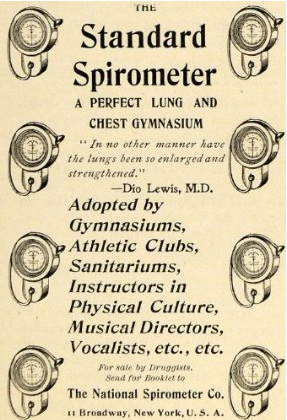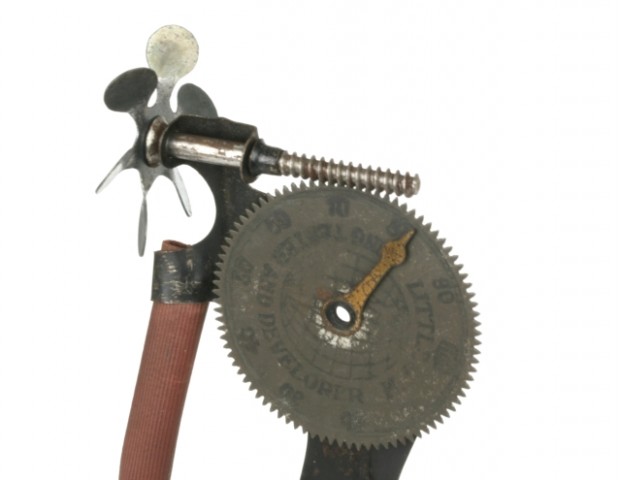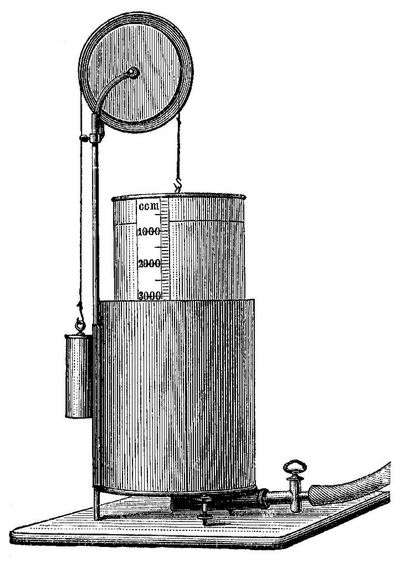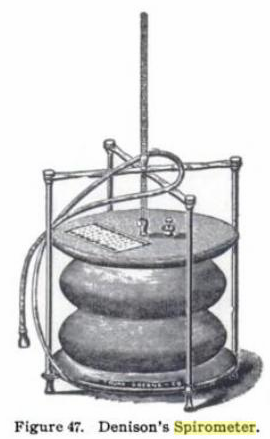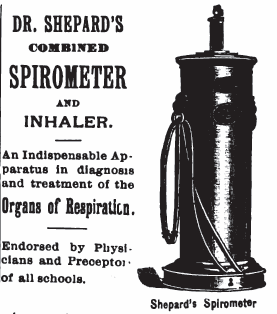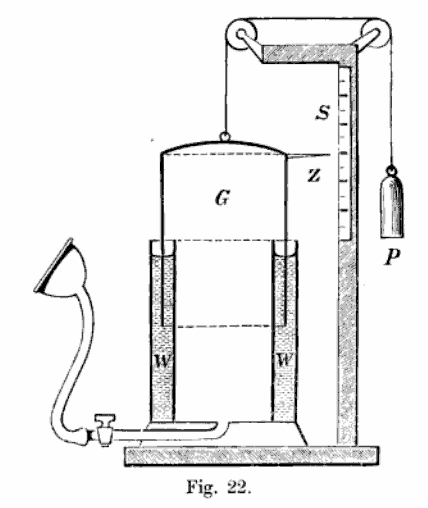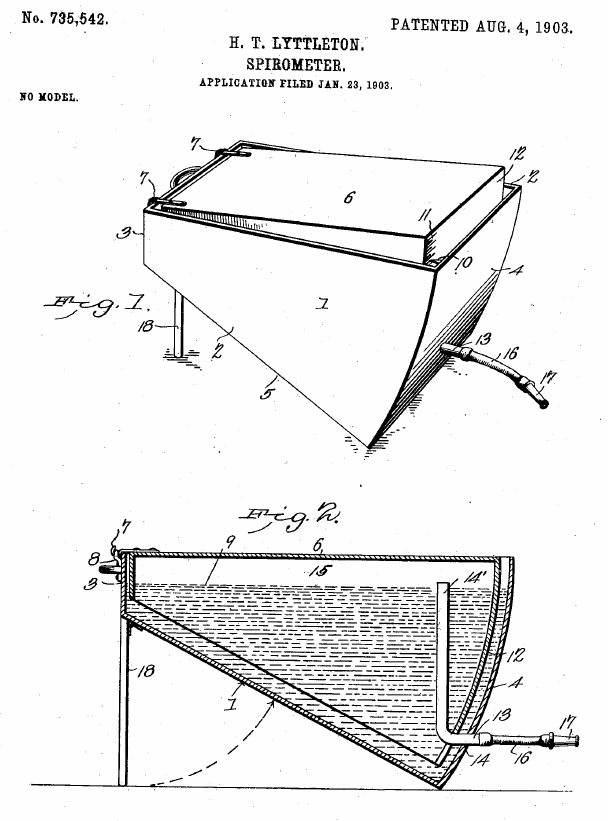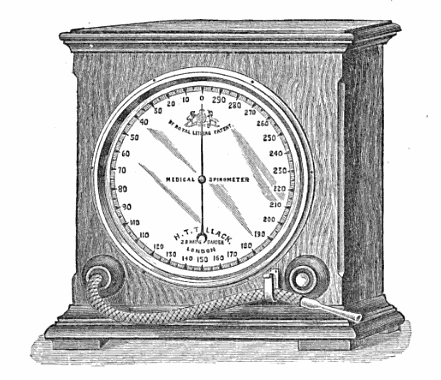Invented by Charles Denison. From: The Sanitarian. Volume 25, 1890, page 408. “The spirometer I here show you is of my own experimenting, and I will trust it will commend itself to you as a faithful measurer of vital capacity. When full it is a hollow cylinder, 11.28 inches in diameter, standing on end, the two ends being closed, and the sides made of one piece of light, impervious cloth. The structure is so light as to give little or no resistance to the expired breath. That resistance when desired, however, is intended to be used and measured by weights placed on top of the cylinder, or by a manometer attached, so as to determine the expelling force, in pounds pressure, that each individual may have.”
Category Archives: 1890s
Spirometer, Lewis, 1898
Spirometer invented by Dr. Dio Lewis, an early advocate of health through exercise and a gymnasium owner. Sold as a lung exerciser. Advertisement from 1898. From: http://www.amazon.com/1898-National-Spirometer-Gymnasium-Lewis/dp/images/B005DGYZMA
Little gem lung tester and developer, circa 1890’s
Blowing into the tube caused the propeller to spin and the worm gear to drive the larger gear. It was also considered of benefit to “any lady who desires to symmetrically enlarge her bust”. From the 1890’s. From: http://phisick.com/item/little-gem-lung-tester-and-developer/
Spirometer, modified Hutchinson, 1800’s
Described as a modified Hutchinson spirometer, presumably from the late 1800’s. Original source unknown. From: http://www.zeno.org/Meyers-1905/B/Atmung
Spirometer, Denison’s, 1899
Spirometer, Shepard, 1893
Spirometer, Shepard, 1892
Spirometer, Boruttau, 1898
Spirometer, Lyttleton, 1894
A very similar idea to the Krogh Spirometer, but without the counterweight or any recording device. Doubtful if it was ever manufactured.
Spirometer, Stanley, 1891
From The Journal of the Royal Anthropological Society, 1891, Vol 20, page 29.
“The spirometer exhibited was designed to register the number of cubic inches of air could expire at the resistance of a small constant pressure, the resistance of the instrument being equal to two inches of water pressure only. In the ordinary spirometer in use, formed of a counterbalanced receiver placed in a pneumatic trough, it is well known that according to the counterbalancing and difference of height of water in the receiver the resistance pressure may vary from -3 to +3 inches of water. In the first case, air may be drawn in during expiration from the nose. In the second the muscular power of the lungs will be enabled to expel nearly their entire contents. In another form of spirometer in which the expelled air moves light fans in air, it is found to be impossible from the unequal friction caused by corrosion and from leakage, to maintain nearly equal rates. The instrument before the meeting is constructed upon a principal common to the best forms of gas meters, but in this case the measurements being for small quantities, and needing no apparatus for continuous additions for registration, nor solidity of parts for rough handling the measuring apparatus is made much lighter and more delicate construction. It consists, as in the gas meter, of a light closed fan wheel, with cup fans, revolving nearly under water. The expelled air is projected into one side of the fan wheel. This side rises immediately by the minus gravity of the air to that of the surrounding water, while in the meantime another fan comes to position to receive the next quantity of expired air, and so on continuously so long as the lungs expire breath at a pressure beyond the small frictional resistance of the apparatus.
“The registration mechanism consists of a light train of three watch wheels and a single balanced hand, which indicates the number of cubic inches on a dial. The hand stops and remains in its final position when the expired air no longer has the power to move the mechanism. The registration shows upon average about 10 percent more than that given in Dr. Hutchinson’s tables, which were taken from the register of an ordinary pneumatic trough spirometer.
“The hand is brought back to zero for another operation by pressing of a button, which is connected with simple mechanism adapted to this end.”
